Family Viewing: Guide to Film, Traditions, and Modern Media
Updated On: October 23, 2025 by Aaron Connolly
Defining Family Viewing
Family viewing is all about the shared experience of watching TV shows or streaming content together as a household. Over the years, it’s shifted from gathering around a scheduled TV broadcast to catching whatever we want, whenever we want, on different devices.
Core Meaning and Evolution
When we talk about family viewing, we mean the times when several family members sit down together for a show or a movie. It’s not just about entertainment—it’s about bonding, talking, and finding something everyone can enjoy.
Back in the day, networks created the “family hour.” That was a set time for airing content safe for everyone. Broadcasters had to put on entertainment programming that worked for all ages during the first hour of prime time.
Traditionally, everyone gathered around one TV. Families made time for their favorite shows, and whoever had the remote pretty much picked what everyone watched.
Now, things look pretty different. Streaming lets us pick shows on our own schedule. We can pause, rewind, or start over if someone’s late or needs a snack.
People often call this “co-viewing” now. It’s when parents and kids actually watch something together, not just zone out in the same room.
Traditional vs Contemporary Practices
In the past, family viewing followed a set routine. Everyone came together at a certain time, and popular variety shows or sitcoms brought folks together.
It was pretty passive and scheduled. You didn’t have much say in what to watch or when. Commercial breaks gave families a chance to chat.
Now, streaming services have changed everything. Families can pick from endless options whenever they want. Even if someone’s away, you can watch together on different devices.
Modern practices include:
- Watching on tablets, phones, or smart TVs
- Picking from thousands of choices in an instant
- Pausing or stopping whenever you need to
- Chatting about shows over text while watching
Shared viewing still helps kids learn to think critically. Parents can talk about the themes and values in what they’re watching.
Even with all the personalisation, families still set aside time to watch together, especially on weekends or holidays.
Family Viewing in Funeral Traditions

Family viewing plays a big role in funeral traditions. It gives loved ones a final chance to say goodbye before burial or cremation. Families lean on each other for support in these tough moments, and the emotional closure can really matter.
Role in Funeral Services
Family viewings usually fit into a five-step funeral process: embalming, viewing, funeral service, graveside burial, and reception.
The viewing often happens the night before or right before the funeral. Families usually hold these at funeral homes, but sometimes at places of worship or even nursing homes.
Standard viewing timeline:
- Duration: 1-3 hours for a short viewing
- Extended options: Sometimes several days for bigger gatherings
- Location: Funeral home chapel or a special viewing room
Families usually have the body in an open or closed casket. Funeral homes often require embalming for public viewings, especially after 72 hours.
Viewings don’t really follow a set plan. Soft music plays, and family members greet guests as they arrive. Families tend to stay the whole time during shorter viewings to welcome people and accept condolences.
Viewing Etiquette and Customs
Good etiquette helps keep viewings respectful. Guests should show up on time and wear conservative, darker clothing.
Basic etiquette tips:
- Sign the guestbook when you arrive
- Offer quick condolences to the family
- Share a fond memory if it feels right
- Keep your voice down and be considerate
- Give others a chance to speak with the family
Plan to stay at least 20 minutes, but it’s fine to linger if you’re having a comfortable conversation. You can approach the casket for a private moment or prayer, but no one expects you to.
Flowers make a nice gesture unless the family asks for something else. Most funeral homes accept flowers in advance, but it’s smart to check what the family prefers.
Viewings usually welcome close friends and family, not the general public. When held at nursing homes, residents and staff often attend, showing the bonds formed there.
Differences from Wakes and Visitations
It’s easy to mix up viewings, wakes, and visitations, but they’re not the same. Each serves a different cultural or religious purpose.
Key differences:
| Event Type | Body Present | Structure | Religious Aspect |
|---|---|---|---|
| Viewing | Always | Informal/unstructured | Non-denominational |
| Wake | Usually | Structured prayers/rituals | Catholic tradition |
| Visitation | Not required | Social gathering | Any faith |
Wakes come from Catholic and Celtic Irish traditions. They involve prayers, rituals, and storytelling about the person who passed. Originally, mourners would keep watch over the body until burial.
Visitations focus more on supporting the family than viewing the deceased. They might happen before or after the funeral, often at a family home or nursing home.
Identification viewings are a bit different. These are private, usually at the funeral home, and don’t require embalming. Immediate family members get a chance to say goodbye before burial or cremation.
The Family Viewing Film by Atom Egoyan
Atom Egoyan’s 1987 Canadian drama dives into the unraveling of family connections in a world full of technology. The story follows Van, a young guy stuck between his troubled dad, Stan, and his grandmother, who’s been left in a nursing home.
Plot Summary and Themes
Family Viewing centers on Van, a teenager living in a cold condo with his dad Stan and stepmother. Stan records almost everything on video but completely ignores Van’s Armenian grandmother, who’s stuck in a run-down nursing home.
Things get dark when Van finds out his dad has been taping homemade pornography over old family videos. Those tapes held memories with his grandmother and late mother.
Van meets Aline, a phone sex worker whose mom shares a room with his grandmother. Together, they hatch a plan to fake his grandmother’s death and get her out of the home.
Egoyan uses video as both a link and a wall. Stan’s camera captures moments on the surface but erases deeper memories. The film really asks: can families become strangers even when they live together?
The nursing home stands in for society’s tendency to forget its elders. Van’s visits show his real care, while Stan just spies on his own mother with a detective.
Key Characters and Performances
David Hemblen plays Stan, the controlling dad who’s obsessed with documenting life but ends up destroying it. His performance nails a guy who prefers gadgets over real feelings.
Aidan Tierney brings Van to life as a kid quietly fighting back against his father’s control. His rebellion grows as he connects to his grandmother’s past.
Arsinée Khanjian gives Aline, the phone sex worker, a lot of depth. She becomes Van’s ally and shows how financial struggles can force tough choices.
The grandmother, played by Selma Keklikian, represents lost traditions. Even stuck in the nursing home, she’s Van’s emotional anchor.
Gabrielle Rose as the stepmother keeps things tense, showing how new relationships can tear families apart. Her weird interest in Van adds another layer of dysfunction.
Streaming and Watching Family Viewing
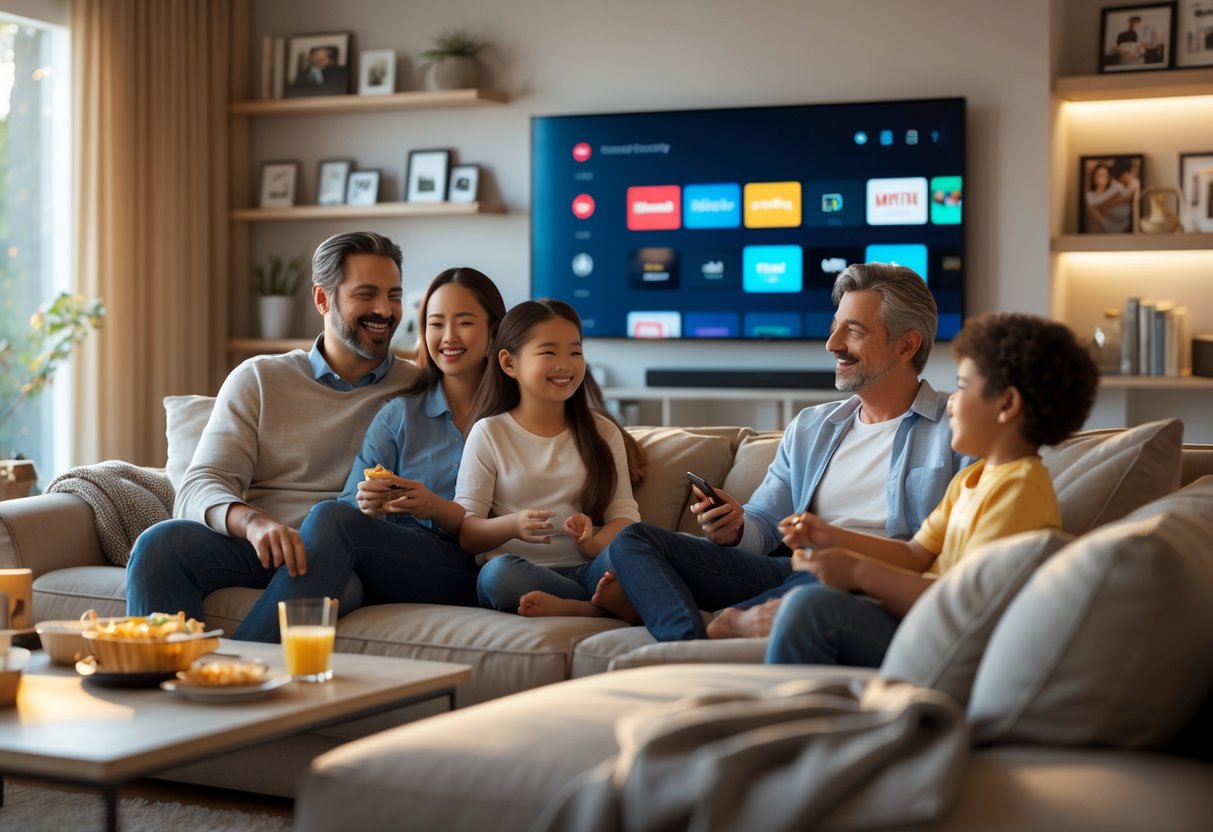
You’ll find family viewing content everywhere now—streaming platforms like Disney+, Netflix, and PBS Kids are the big players. Each one has different parental controls and age-appropriate libraries so families can watch together with a little less worry.
Where to Watch Online
Disney+ Bundle is probably the best bet for families. For £20 a month, you get Disney+, Hulu, and ESPN+, plus tons of content from Disney, Pixar, Marvel, and National Geographic.
Parental controls are solid. Kids’ profiles filter content by age, and PINs keep adult content locked away from little ones.
Netflix might have the best parental controls out there. For £15 a month, you get detailed maturity settings, title blocking, and time limits.
Their kids’ section is packed with educational shows like Ask the StoryBots and interactive episodes. Parents can set up each child’s profile with different rules.
Free options are handy if you’re watching your budget. PBS Kids has ad-free educational shows for ages 2-8. YouTube Kids offers curated videos, timers, and blocking tools.
Kanopy is another good one if you’ve got a library card. It’s ad-free and focuses on educational content that lines up with school curriculums.
Availability on Streaming Services
Most family content shows up on more than one platform, but exclusive series can sway your choice. Disney+ has the lock on Marvel, Star Wars, and classic Disney movies.
Netflix makes its own family shows you won’t find elsewhere. Their educational content comes in lots of languages, and you can download it for offline viewing.
Stan and other local services have different family content depending on where you live. It’s worth checking what’s available in your area.
Live TV options like YouTube TV include channels like Disney Channel, Nickelodeon, and Cartoon Network. These cost more but give you live and on-demand shows.
Content libraries change all the time. Movies and shows jump between services, so bundles are sometimes the safest way to keep access to your favorites.
The Impact of Technology on Family Viewing
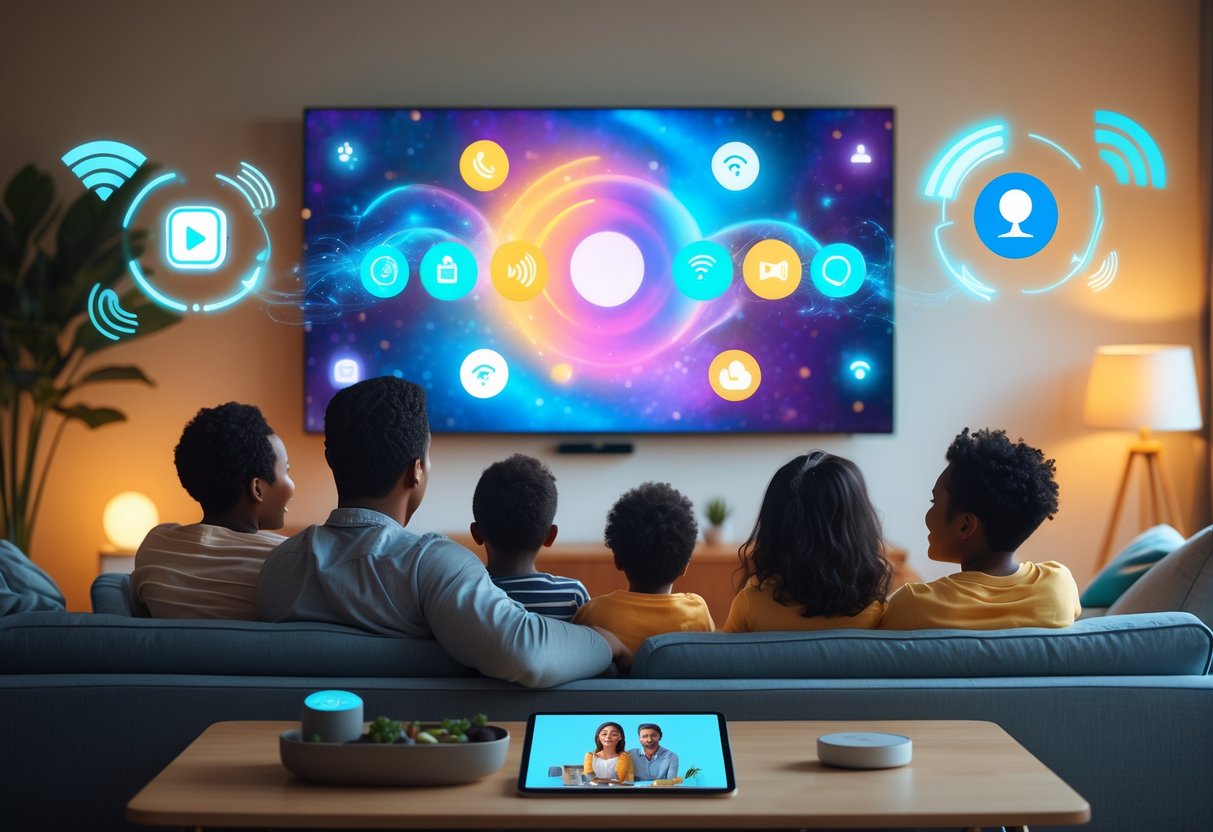
Technology has totally flipped family viewing on its head. We’ve gone from strict TV schedules to a world of streaming and user-made videos. This shift brings awesome new ways to share experiences, but also some headaches with screen time and content quality.
Rise of Video and Digital Media
Streaming platforms have changed how families watch shows. Netflix, Disney+, and BBC iPlayer let us pick what we want, whenever.
No more waiting for a show at 7 PM. Now, we binge entire seasons or pause halfway through for dinner.
Family home videos look different too. Instead of clunky camcorders, we use our phones and share clips instantly with family or on social media.
Parents record everything—first steps, birthdays, silly moments—and kids grow up seeing themselves on screens from the start. It’s a whole new way to remember things.
YouTube and TikTok are packed with family-friendly stuff. From learning channels to goofy pet videos, there’s something for everyone.
Lots of families spend evenings watching YouTube together instead of regular TV.
Challenges in a Video-Saturated Society
Living in a video-saturated society has its downsides. Kids often want solo screen time instead of watching together.
Sometimes, everyone’s in the same room but glued to different devices. That used to be family time, but now it’s more fragmented.
Online content quality is all over the place. Unlike old-school TV, YouTube and social media can slip in stuff that’s not age-appropriate, even with parental controls.
Families have to stay alert about things like homemade pornography or adult content sneaking into search results.
Screen addiction is real, for both kids and adults. With endless videos, it’s tough to hit pause and actually talk to each other.
Some families try to set tech-free times or rooms, but let’s be honest, it’s not easy. Devices often take over instead of bringing us together.
Family Dynamics and Media Consumption
Modern families walk a tricky line between shared viewing and everyone doing their own thing. Where you put screens and devices around the house really changes how much people actually hang out and talk.
Shared Experiences vs Individual Viewing
When families watch TV together, they get real chances to bond and connect. Those shared moments spark conversations about values, characters, and wild plot twists.
Families who make a habit of watching together usually communicate better. Parents step in and help kids make sense of tricky topics during these sessions.
But let’s be honest—everyone needs some personal screen time too. Kids especially need space to dive into shows that match their interests and age.
Benefits of shared viewing:
- Builds family bonds
- Opens up discussions
- Lets parents guide kids (parental guidance)
- Starts family traditions
Balancing group time and personal choice isn’t always easy. Some families set aside evenings for group viewing, then let everyone pick their own thing at other times.
Family videos and old home movies stick around as shared treasures. Those collections keep memories alive and give families stories to tell for years.
Media in the Family Home
Where you put TVs and devices really changes how families interact. The living room still wins as the main spot for watching together.
Having the TV on in the background can mess with routines and even dinner conversations. Studies say constant media can break up family chats and meal times.
Common media arrangements:
- Main TV in the living room
- Devices in bedrooms
- Tablets for group watching on the go
- Gaming systems in their own spots
Juggling all these screens can get messy. With smart homes and streaming, everyone can watch their own thing in different rooms.
Parents find it tough to keep track of what kids watch when devices are scattered everywhere. Setting clear family media rules helps keep things healthy.
How you set up your home really decides if media brings people together or sends everyone off to their own corners.
Family Viewing Across Generations
Different age groups have their own ways of watching shows together. Older folks stick to the big TV in the living room, while younger people love their phones and tablets. The home setup matters a lot, whether you’re sharing a Netflix account or watching old family homevideos.
Intergenerational Differences
Every generation brings something different to family viewing. Grandparents usually want everyone in one room, watching on the big screen and chatting about the show.
Parents try to balance old-school and new tech. They might start a movie on TV but let kids finish on tablets. Some families even watch the same show in separate rooms, each on their own device.
Teens and young adults mostly stream on their phones or laptops. Subtitles are a must for them, and surprisingly, they help older family members keep up too. It’s a small thing, but it really bridges the gap.
Quick win: Try turning on subtitles for a family movie night—it actually helps everyone stay engaged.
Influence of Home Environment
How your home is set up changes everything. Open-plan spaces invite everyone to watch together. Separate bedrooms with screens? Not so much. With so many streaming options, each generation can pick what they want, sometimes all at once.
Homevideos still have a special place. Old recordings bring generations together in ways Netflix can’t. Grandparents love seeing grandkids as toddlers, and younger family members get a peek into family history.
In nursing homes, staff often use family homevideos to get residents talking and remembering. These recordings connect people across ages, sparking conversations that matter.
Finding ways to watch together—while respecting everyone’s preferences—keeps families connected.
Ethics and Privacy in Family Viewing
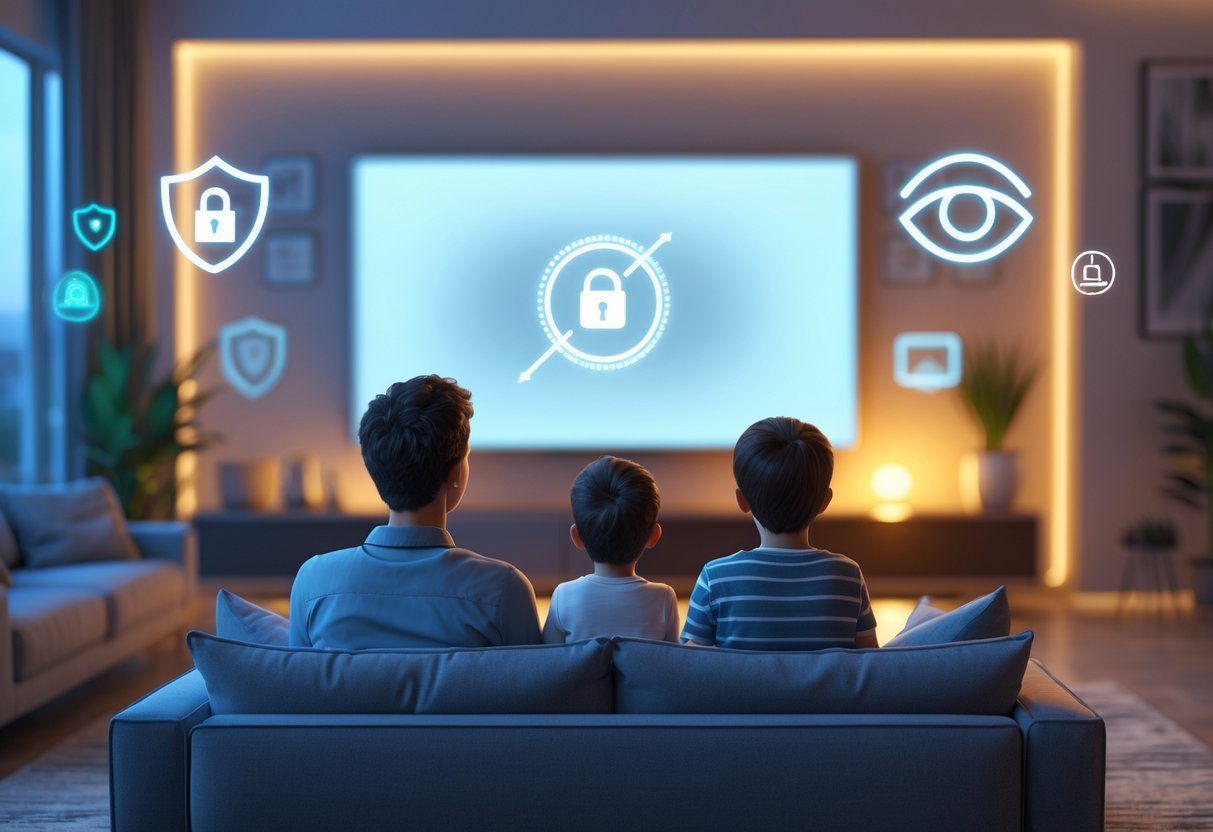
Family viewing brings up real questions about privacy and consent, especially as home videos get shared or stored online. These issues matter more when recordings could affect someone’s wellbeing.
Consent and Recording
Before recording any family moment, always ask if everyone’s cool with it. It’s not just polite—it’s necessary.
Key consent considerations:
- Kids might not get what a recording could mean years later
- Some people are fine with casual filming, others really aren’t
- Relatives may want to skip the camera during emotional or private times
Set clear boundaries about what you record and what stays private. Anyone should be able to say no—even during big family moments.
Best practices include:
- Ask before filming
- Stop if someone wants you to
- Talk about where recordings go and who sees them
- Let people check the footage before you save it
Transition from Home Videos to Sensitive Content
It’s easy to cross a line from innocent home videos to stuff that’s just not okay. We have to stay alert about family privacy as viewing habits change.
Warning signs:
- Filming private moments that could embarrass someone later
- Sharing videos without everyone’s say-so
- Putting out content that reveals too much personal info
When family viewing turns into something like homemade pornography, that’s a real violation of trust and privacy. Families need clear rules about what’s okay to film and share.
Protective measures:
- Keep recordings private and safe
- Never share intimate moments online
- Set house rules for filming
- Check in regularly about what’s being recorded and why
Community and Shared Remembrance
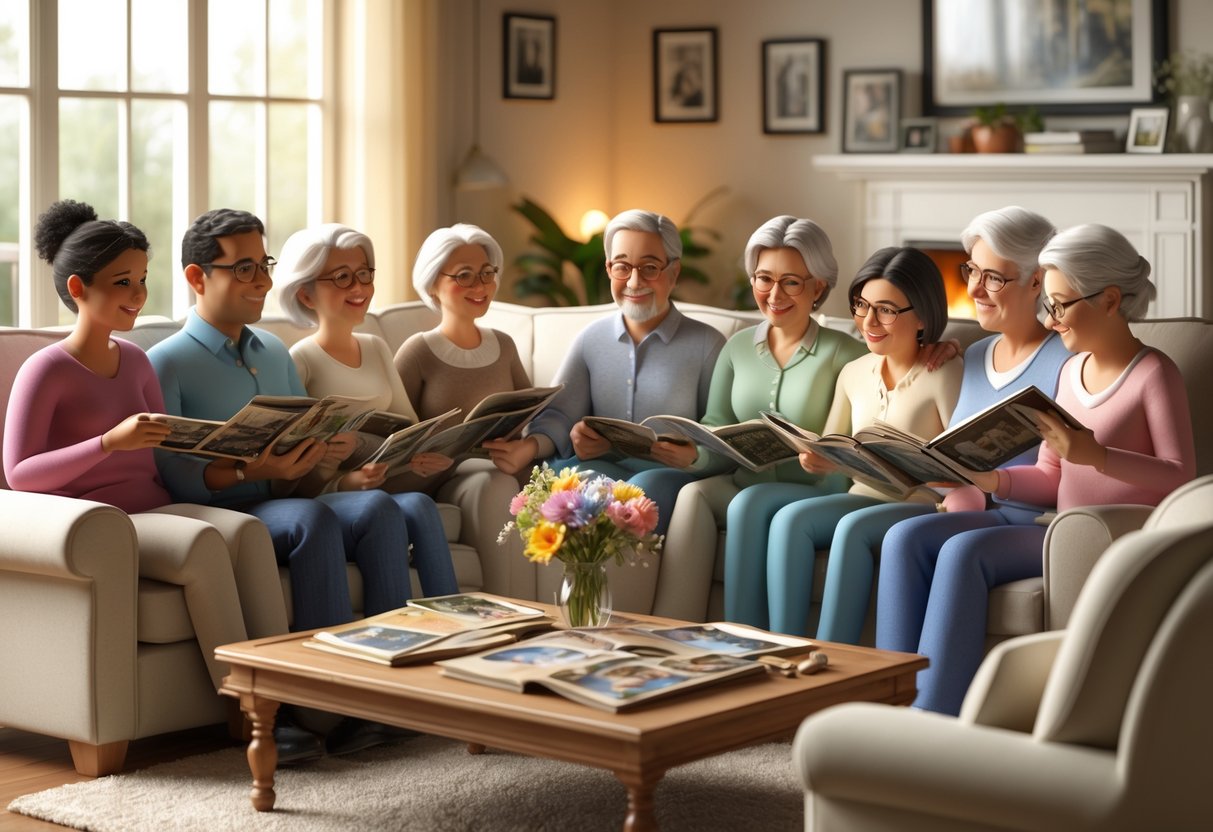
When families gather to watch together, it becomes more than just individual grief. These moments spark collective healing and reconnect relatives who may have drifted apart.
Role in Mourning and Memorialisation
Family viewing during times of loss gives everyone a safe place to grieve together. Multiple generations can share the experience, making support feel natural.
People start telling stories and sharing memories. These chats keep family history alive and help everyone feel heard.
In nursing homes, staff often join these gatherings. They share their own memories, which honours the relationships formed during care.
Seeing others laugh or cry makes it easier for everyone to show their real feelings. Grief feels less isolating when it’s shared.
Supporting Family Connections
Family viewings pull people together—sometimes after years apart. Loss has a way of closing old gaps. Kids meet cousins, siblings reconnect, and those family ties get stronger.
People naturally help each other out during these gatherings. They sort out funeral plans, share costs, and support those who need it most.
These moments let different generations connect in a real way. Grandkids hear wild stories about their grandparents, and older relatives pass down traditions.
The impact often lasts. Families who go through this together usually keep in touch more, planning reunions or just checking in more often.
Contemporary Alternatives to Traditional Family Viewing
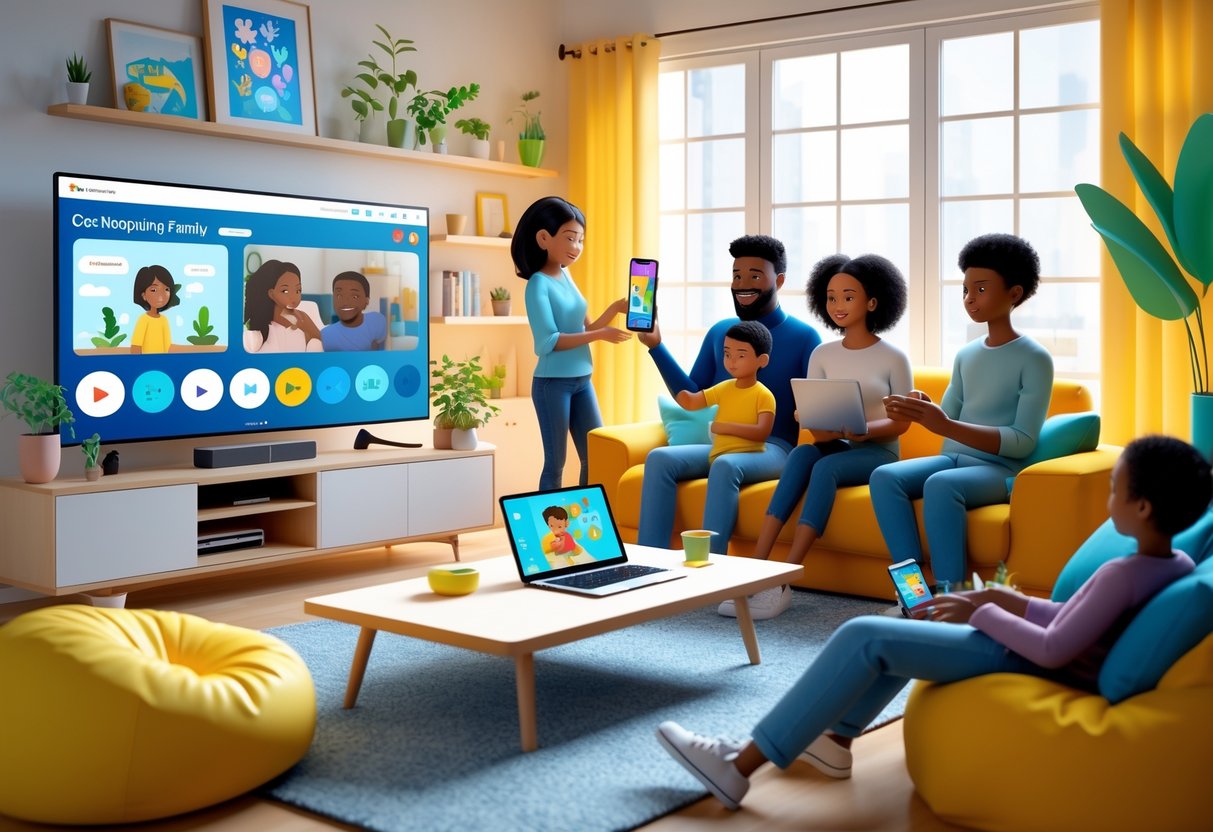
Tech has totally changed how families share big moments, making new ways to connect even if you’re miles apart. Streaming and online platforms let families stay close when they can’t be together in person.
Online Memorials and Tributes
Online memorials are now a go-to for many families. These digital spaces let everyone share memories, photos, and videos whenever they want.
Popular memorial platforms include:
- Memory sites with photo galleries
- Social media tribute pages
- Digital guest books
- Video compilations
Anyone can upload their own memories. Family members pitch in from all over the world. Most sites are free, with some extras if you want to pay.
Key benefits:
- Accessible: Visit anytime, anywhere
- Permanent: Memories stay online
- Collaborative: Everyone can add something
- Affordable: Lots of free choices
These platforms are especially good when family is spread out or in different time zones. You can set them private for just family, or public for friends too.
Virtual Viewing and Streaming Funerals
Streaming has made it possible for relatives far away to join in on important events. Since 2020, virtual viewings have become way more common, and lots of families still use them.
Live streaming lets you broadcast ceremonies to anyone who can’t be there. You can use anything from a smartphone app to a pro service.
Common streaming options:
- Facebook Live (free)
- YouTube Live (free)
- Zoom (free version works)
- Professional funeral streaming (£50-200)
Many venues now have streaming gear ready to go. Family can watch live or catch up later. Some services even have chat so people can share messages during the event.
Tech tips:
- Make sure your internet is solid
- Test everything before the big day
- Pick someone to run the stream
- Always have a backup plan
Virtual options help families stay connected when travel just isn’t possible.
Popular Culture References to Family Viewing
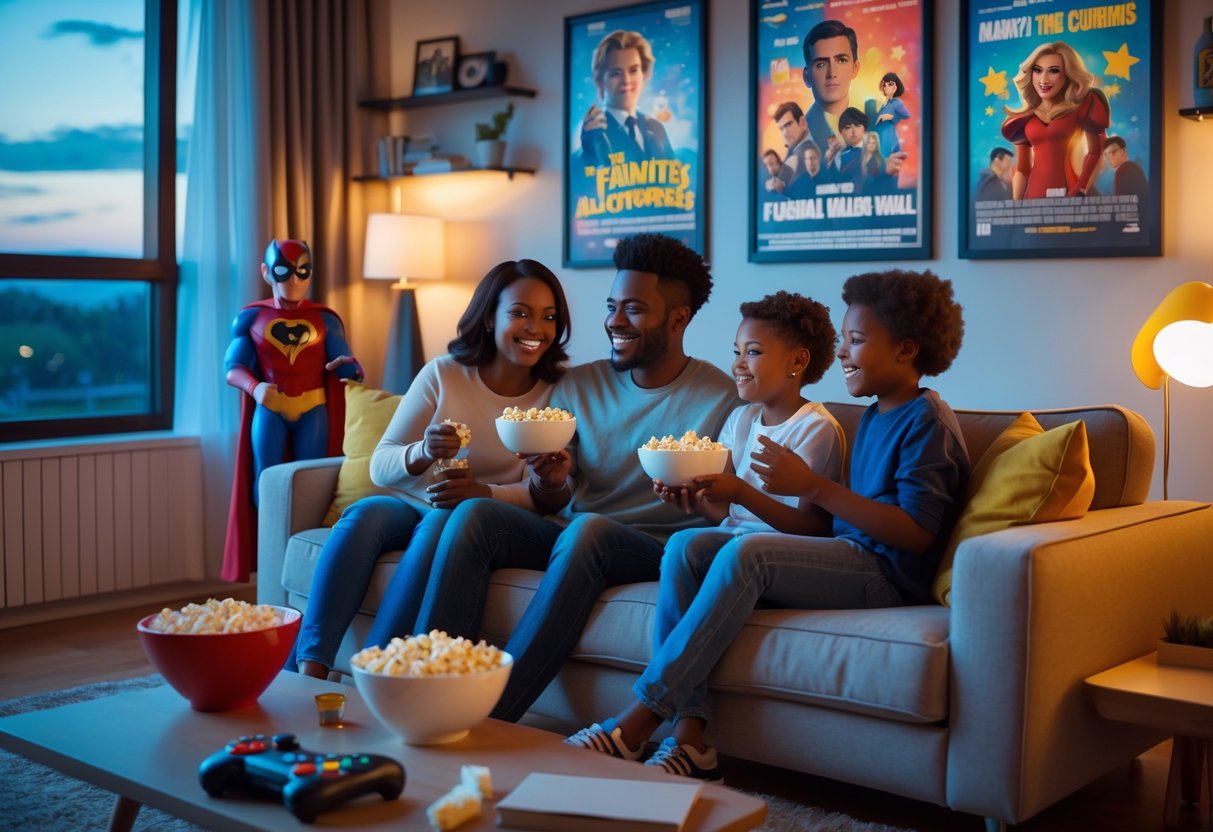
Movies and TV have shaped how we see family viewing, and some works really stick in the culture. These references show how family dynamics and habits keep changing.
Influence on Film and Television
Family viewing pops up a lot in modern media. Directors love scenes of everyone gathered around the TV—it says a lot about their relationships.
Contemporary shows often focus on how tech changes family time. Sometimes you see families glued to their phones during movie night. Other times, shows celebrate everyone watching together.
Sitcoms love to show families arguing over what to watch. Dramas use these moments to reveal family secrets or tensions.
Streaming changed things. Now, lots of shows show families watching different things in different rooms. That’s just how it is now.
Media uses these scenes to talk about:
- Parent-kid communication
- Generational gaps in what people like
- Tech’s effect on bonding
- Nostalgia for old-school family nights
Notable Works and Their Impact
Family Viewing (1987) by Atom Egoyan dives right into TV’s role in family life. David Hemblen stars in this Canadian drama, which shows how watching habits mirror emotional distance.
Egoyan turns the TV into a symbol for disconnection. It’s not subtle, but it works.
Modern streaming on sites like Kanopy brings these themes to new viewers. Students and film buffs can watch and think about how media shapes family life.
Recent series keep exploring these ideas. Black Mirror looks at tech’s impact on family. Stranger Things goes for the nostalgic group-viewing vibe.
Documentaries also dig into family viewing. They look at how shared screen time makes memories, but also at what happens when it goes too far.
Frequently Asked Questions

Parents usually have a lot of questions about choosing content for everyone. They want to know about programme ratings, what’s age-appropriate, and where to find trusted info for making good choices.
What types of programmes are suitable for all ages?
Nature documentaries can really bring families together, especially those with kids of different ages. Shows like Blue Planet or Planet Earth grab younger viewers with gorgeous visuals, while older family members get a dose of educational content.
Animated films from major studios usually land a family-friendly rating. Studios put a lot of effort into making sure these movies pass content checks, so they’re safe for kids but still have jokes that adults will appreciate.
Classic sitcoms—if they steer clear of mature themes—make another safe bet. A lot of older comedy series stick to wholesome family situations, so you don’t have to worry about strong language or anything sketchy.
How can you determine if a film is appropriate for the whole family?
Always check the official age rating before you hit play. In the UK, the British Board of Film Classification (BBFC) lays out clear ratings from U (Universal) to 18, and they explain any content issues.
Look at the content warnings that come with the rating. These warnings will flag things like violence, bad language, or scary scenes that might bother younger kids.
It’s also smart to watch trailers or skim plot summaries first. Most streaming services now include short content descriptions so you can spot any red flags for family viewing.
What factors should be considered when choosing a television show for family viewing?
Language content really makes a difference. If a show drops a lot of strong language or crude jokes, it probably won’t fit well in a home with younger children.
Violence is another big one. Think about whether fight scenes, weapons, or intense conflicts are okay for your youngest viewers.
Episode length can actually be a dealbreaker. Shorter episodes usually work better for kids, while longer ones might just lead to bedtime battles.
Are there any recommended guidelines to follow for family-friendly content ratings?
U and PG ratings usually hit the sweet spot for mixed-age groups. These ratings keep things safe for kids but still offer enough to keep adults interested.
If you see a 12 rating, you might want to think twice if you have younger kids around. Programmes at this level could have mild violence, the odd strong word, or themes that need a bit of explaining.
Streaming services have started giving parents extra tools to filter content. Netflix, BBC iPlayer, and others let you set restrictions by age, which is honestly pretty handy.
How does one find reviews or age-appropriate recommendations for television shows?
Common Sense Media does a great job breaking down family reviews for most popular shows. They spell out age recommendations and flag any content that could be a concern.
You can also check the BBFC website for detailed info about film and TV ratings. Their database tells you exactly why a programme got its rating.
Parent review sections on streaming platforms can be surprisingly helpful. These real-world comments often mention if other families thought a show was okay for their kids.
Can you suggest any resources for parents to assess the suitability of films for children?
The Internet Movie Database (IMDb) has a parents’ guide for most films. You’ll find content broken down by category, like violence, profanity, and even those scenes that might be a bit too scary.
Kids-in-Mind.com gives out numerical ratings for different types of content. They rate sex, violence, and profanity on separate scales, so parents can quickly get a sense of what’s in a movie.
Local libraries usually keep lists of family-friendly films. Librarians update these lists pretty often, and they can help you pick out age-appropriate movies for your family.

